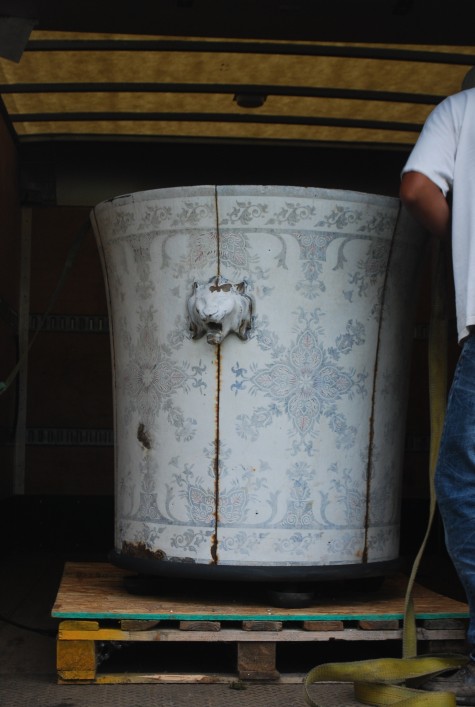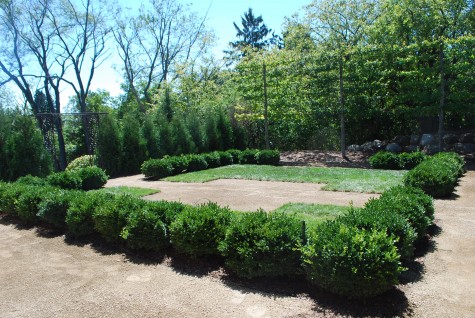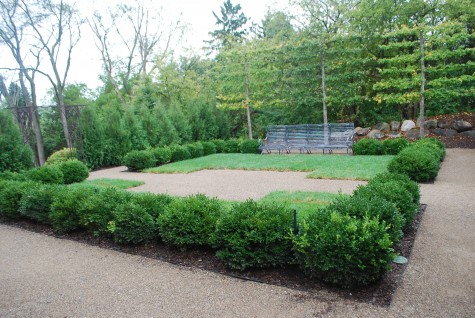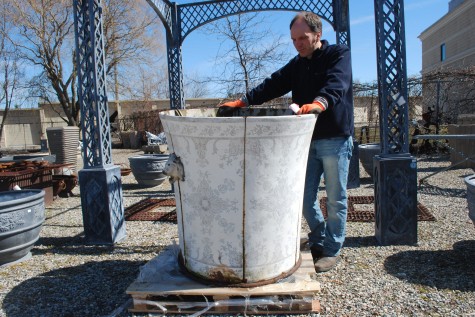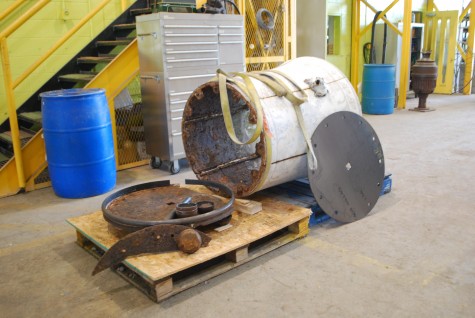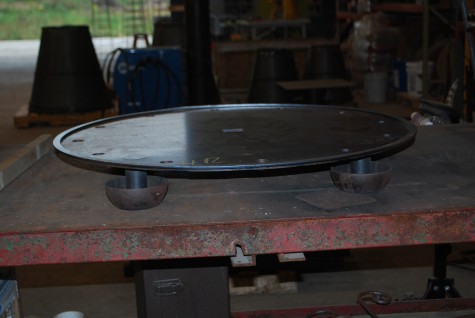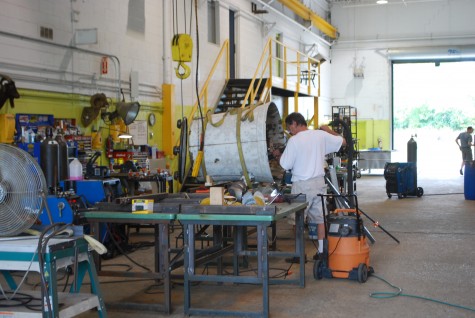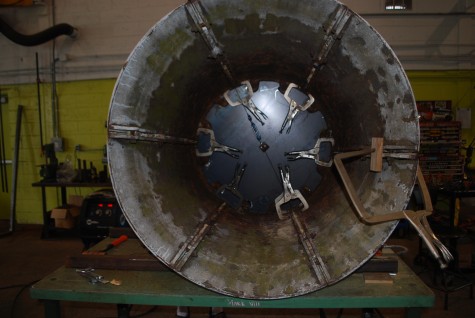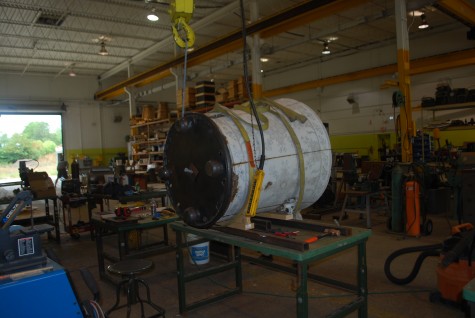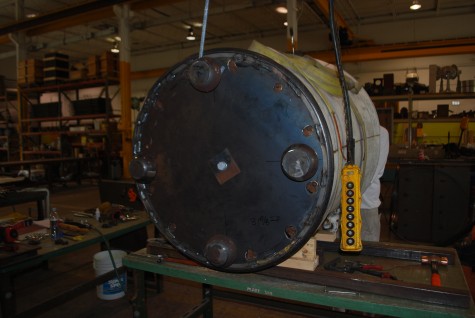The dowager queen French vase from yesterday’s post has a home waiting for her-but not the home I expected. An object of this size would need an even bigger space, wouldn’t you think? What evolved was anything but.
 My clients bought a house that had never really been finished. The landscape was much the same; unfinished. My client referred to the property on the side of the house as “the music room mulch garden”. It was bleak. This very small space functioned as a transition space between the front of the property, and the rear-a sheer 8′ foot drop in grade. A boulder retaining wall at grade barely visible in this picture was punctuated by a staircase down with 16 stone steps-maybe more. This left the area with an edge that was in fact a precipice. At the base of the precipice, multiple air conditioning units, and a collection of meters apparent in this picture.
My clients bought a house that had never really been finished. The landscape was much the same; unfinished. My client referred to the property on the side of the house as “the music room mulch garden”. It was bleak. This very small space functioned as a transition space between the front of the property, and the rear-a sheer 8′ foot drop in grade. A boulder retaining wall at grade barely visible in this picture was punctuated by a staircase down with 16 stone steps-maybe more. This left the area with an edge that was in fact a precipice. At the base of the precipice, multiple air conditioning units, and a collection of meters apparent in this picture.
 My first design, they flat out rejected; I had missed some important information. My first design did not take into account that they spent their summers at a home on the East Coast. OK, my plan for a cutting garden and whatever went with that was way off the mark. Plan 2-a landscape that would function and look beautiful early and late, and especially over the winter. A small landscaped area that would have big impact. A healthy hedge of Thuja Nigra sporting one lone out of place Thuja Pyramidalis was a starting point.
My first design, they flat out rejected; I had missed some important information. My first design did not take into account that they spent their summers at a home on the East Coast. OK, my plan for a cutting garden and whatever went with that was way off the mark. Plan 2-a landscape that would function and look beautiful early and late, and especially over the winter. A small landscaped area that would have big impact. A healthy hedge of Thuja Nigra sporting one lone out of place Thuja Pyramidalis was a starting point.
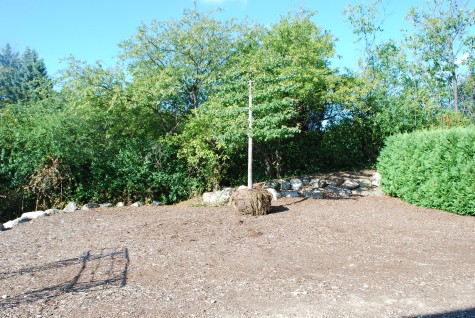 Three linden espaliers of great age would form a backdrop to this small garden. The green wall they would provide would take up little space, and would screen the clunky boulders and grade changes from view. Enclosing a small space makes for a feeling of intimacy. And the room would need some furnishing.
Three linden espaliers of great age would form a backdrop to this small garden. The green wall they would provide would take up little space, and would screen the clunky boulders and grade changes from view. Enclosing a small space makes for a feeling of intimacy. And the room would need some furnishing.
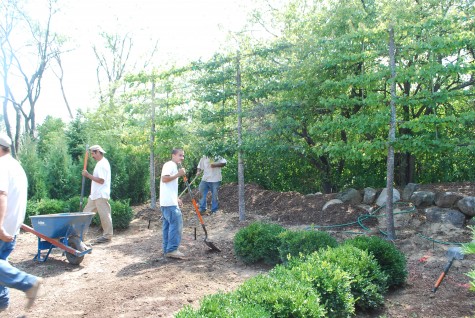 Three linden espaliers, each about 10 feet wide, completely covered the back. It would be up to my client to decide whether to maintain the horizontal pattern of the branches, or let the the twiggy growth make a solid wall of leaves. Green velvet boxwood organizes the ground plane. The precipitous drop to the rear yard is shielded from view by a hedge of Thuja Nigra that matched the hedge already in place on the street side. Flat and safe spaces are friendly to people. As for the mulch pile we had scraped up-that would be used to mulch the new plantings.
Three linden espaliers, each about 10 feet wide, completely covered the back. It would be up to my client to decide whether to maintain the horizontal pattern of the branches, or let the the twiggy growth make a solid wall of leaves. Green velvet boxwood organizes the ground plane. The precipitous drop to the rear yard is shielded from view by a hedge of Thuja Nigra that matched the hedge already in place on the street side. Flat and safe spaces are friendly to people. As for the mulch pile we had scraped up-that would be used to mulch the new plantings.
 Decomposed granite walkways make it easy to navigate the space. The color is easy on the eye, but provides strong contrast to the green elements. There is no reason a small space cannot be a lively and interesting space.
Decomposed granite walkways make it easy to navigate the space. The color is easy on the eye, but provides strong contrast to the green elements. There is no reason a small space cannot be a lively and interesting space.
A simple arrangement of plant material and gravel finishes the landscaping portion of the project. Now what?
From inside the house, a generously proportioned bench makes the space look inviting. The placement of the bench implies there will be something of interest to see. I thought that old French vase might be just the thing.
 The colors of each compliment one another. The placement of a large element in a small space can be dramatic.
The colors of each compliment one another. The placement of a large element in a small space can be dramatic.

The view from the bench side is in scale with the size of the house. Should I plant very tall? Short and wide? With what? It will take some time and thought to get the planting just right.
